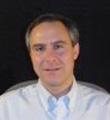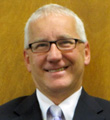Jumpstarting Combined Heat and Power Initiatives in the United States
20 November 2013
View Webinar Content
Presentation—Introduction to the webinar and panelists
Presentation—Jumpstarting Combined Heat and Power Initiatives in the United States
Presentations—U.S. Policies and Actions in Support of CHP
Presentations—New York’s Efforts to Promote CHP for Grid Resiliency and Reliability
Transcript—Webinar audio transcript
For many years, the United States has largely overlooked a significant opportunity: recovering the heat normally lost in power generation and using it to provide useful thermal energy to businesses and factories. However, policymakers and industry are now starting to see the environmental and business benefits of combined heat and power (CHP), and a new market is being created in its wake. While the benefits of the widespread adoption of CHP in the United States are significant, CHP currently represents just 8% of U.S. generating capacity, compared to over 30% in countries such as Denmark, Finland and the Netherlands. This is mainly because of regulatory barriers, market uncertainty and a general lack of understanding of the technology and its benefits. This webinar will look at the public sector’s efforts to grow this market and remove the remaining barriers standing in the way.
This webinar—the third in a series by the Institute for Industrial Productivity (IIP) and the Clean Energy Solutions Center—explored how federal and state governments are leading promotion efforts to increase the use of CHP in order to achieve their environmental goals. It examined specific policy actions and showcase the work of two states that have developed innovative approaches to increase CHP.
Panelists
 Dwayne Breger, Director, Renewable and Alternative Energy Division, Massachusetts Department of Energy Resources
Dwayne Breger, Director, Renewable and Alternative Energy Division, Massachusetts Department of Energy Resources
Dwayne Breger is the Director of the Renewable and Alternative Energy Division at the Massachusetts Department of Energy Resources (DOER). His division is responsible for the implementation of the state’s Renewable Energy Portfolio Standards, and policy and programs related specifically to solar, wind and biomass energy, combined heat and power, and alternative transportation. At DOER, Dwayne has led the development of the state’s Solar Carve-Out program, analysis and rulemaking on biomass energy, and the original development of the Regional Greenhouse Gas Initiative. Dwayne has been actively engaged with renewable energy for over 30 years. Prior to joining DOER in 2002, he served as a research associate at UMass Amherst, as a U.S. participant in the International Energy Agency, an AAAS/EPA Environmental Fellow, and as a faculty member Lafayette College. He holds degrees from Swarthmore College (BS, Engineering), MIT (MS, Technology and Policy), and UMass Amherst (PhD, Resource Economics).
 Katrina Pielli, Senior Policy Advisor to the U.S. Department of Energy’s Deputy Assistant Secretary for Energy Efficiency
Katrina Pielli, Senior Policy Advisor to the U.S. Department of Energy’s Deputy Assistant Secretary for Energy Efficiency
Katrina Pielli is a Senior Policy Advisor to the U.S. Department of Energy’s Deputy Assistant Secretary for Energy Efficiency where she provides strategic input into the Department’s energy efficiency program direction, focused on state, utility and industrial policy. She leads the DOE’s implementation of the August 30, 2012 Industrial Energy Efficiency Executive Order, leads DOE’s technical assistance effort on the U.S. Environmental Protection Agency’s Boiler MACT (Maximum Achievable Control Technology) rule, provides strategic input into Administration and interagency discussions on manufacturing and energy efficiency policy, leads the Better Buildings Challenge Utility Ally effort, and is a staff lead for the State & Local Energy Efficiency Action Network Working Group focused on utility policy. She is the former DOE Advanced Manufacturing Office’s Technical Assistance Acting Supervisor, as well as the former Deputy Associate Director for Energy & Climate at the White House Council on Environmental Quality.
 Michael Worden, Chief, Electric Distribution Systems, New York State Public Service Commission
Michael Worden, Chief, Electric Distribution Systems, New York State Public Service Commission
Mr. Worden has 37 years of utility industry experience. He is responsible for New York State’s Standardized Interconnection Requirements, which are applicable to small distributed generation facilities up to 2 MW. Michael is also responsible for the following activities at the New York State Public Service Commission: utility electric emergency plan oversight, electric distribution system reliability, power system storm hardening and resiliency efforts, and development of smart grid and micro grids. Michael has a BSE from the University of Tennessee at Chattanooga and an MBA from the University at Albany.
 Bruce A. Hedman, Institute for Industrial Productivity
Bruce A. Hedman, Institute for Industrial Productivity
Bruce A. Hedman has more than 30 years of experience in industrial energy technology research, development and commercialization, and is a recognized authority on combined heat and power (CHP) and distributed generation technologies, markets and policies. Bruce went to the Institute for Industrial Productivity from ICF International, where he led ICF’s consulting services practice in distributed generation and CHP. As a vice president at ICF, he provided guidance and support to the U.S. Environmental Protection Agency’s Combined Heat and Power Partnership and the U.S. Department of Energy’s Distributed Energy program. He also provided technology assessments, market evaluations, and strategic planning support to numerous private developers and equipment suppliers. He has worked on a number of projects in China including assessments of waste heat to power systems in the cement industry and an analysis of the potential for CHP and other forms of distributed generation in select provinces.
This webinar series on Industrial Excellence is being hosted by the Institute for Industrial Productivity (IIP) and the Clean Energy Solutions Center. The webinars cover a wide range of topics related to industrial energy efficiency – including energy management, policy, financing and technology best practices. Earlier webinars in the series include “Breaking Through the Information Barrier” and “The Future of Industrial Energy Efficiency Finance in China.”
